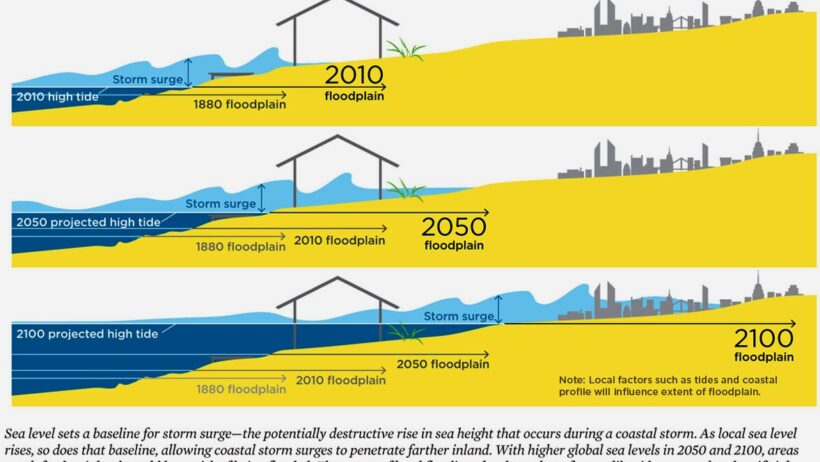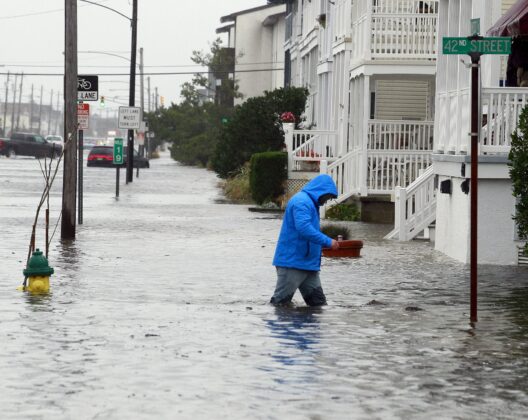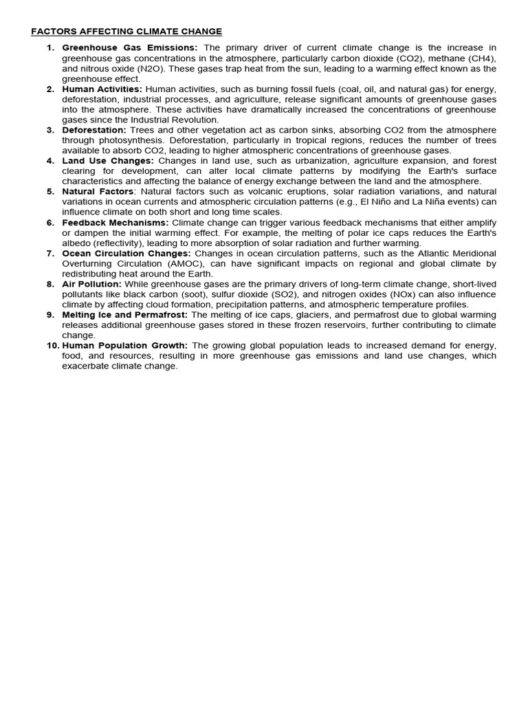Sea level rise is a consequence of climate change, threatening coastal communities, ecosystems, and economies worldwide. As the planet warms, ice sheets melt, and oceans expand, the inevitable increase in sea levels poses a dilemma that we must not ignore. Tackling this multifaceted issue requires concerted efforts from individuals, communities, governments, and organizations. Here is an exploration of effective ways to mitigate climate change and prevent sea level rise, illuminating potential avenues through which we can shift our perspective and engage with this pressing crisis.
Understanding Sea Level Rise: The Science Behind the Threat
Before delving into prevention strategies, it’s essential to grasp the science behind rising sea levels. The two primary mechanisms contributing to this phenomenon are thermal expansion and glacial melt. As global temperatures soar, ocean water expands, resulting in higher sea levels. Concurrently, glaciers and ice caps, particularly in Greenland and Antarctica, are melting at an alarming rate, releasing vast volumes of freshwater into the oceans.
The ramifications of these changes are profound. Low-lying coastal areas are increasingly susceptible to flooding, erosion, and extreme weather events, putting millions of lives and numerous ecosystems at risk. Delving into preventive measures necessitates a blend of innovation, education, and collaborative action.
Promoting Renewable Energy: The Cornerstone of Change
Transitioning from fossil fuels to renewable energy sources is pivotal in combating climate change. Solar, wind, hydro, and geothermal energy are sustainable alternatives that produce little to no greenhouse gas emissions. The reduction of carbon footprints starts at home.
Individuals can embrace solar panels and energy-efficient appliances, thereby lessening reliance on nonrenewable resources. On a larger scale, governments must foster investment in renewable infrastructure, incentivizing both businesses and citizens to adopt clean energy solutions. Diminishing our dependency on fossil fuels not only curtails greenhouse gas emissions but also mitigates climate-related impacts on sea levels.
Reforestation and Afforestation: Nature’s Allies in Climate Mitigation
Forests are one of our planet’s most formidable assets in sequestering carbon dioxide. Trees absorb CO2 during photosynthesis, playing an instrumental role in climate regulation. Reforestation—planting trees in deforested areas—alongside afforestation—planting trees where there were none—are vital strategies to combat climate change.
Initiating community-driven tree-planting campaigns can enhance local biodiversity while also reducing atmospheric carbon levels. Moreover, mangroves, coastal wetlands, and other types of vegetation act as natural barriers that absorb storm surges and mitigate the impact of rising seas. By creating and maintaining these green buffers, we bolster our defenses against the encroaching ocean.
Innovating Sustainable Practices: Leading by Example
Innovative sustainable practices are essential to curbing the long-standing habits contributing to climate change. The rise of the circular economy challenges traditional linear models—where resources are used and discarded—encouraging instead a system where materials are reused, recycled, and regenerated.
Encouraging companies to adopt sustainable manufacturing processes can lead to massive reductions in waste and pollution. From utilizing biodegradable materials to implementing zero-waste policies, businesses have the opportunity to be forerunners in the fight against climate change. Conscious consumerism—where individuals consider the environmental impact of their purchases—can drive market demands for sustainable products, thus influencing corporate behavior.
Urban Planning and Sustainable Architecture: Designing for the Future
Urban environments are particularly vulnerable to the repercussions of rising sea levels. Strategic urban planning and sustainable architecture must prioritize resilience. Cities can invest in green infrastructure, such as permeable pavements, green roofs, and enhanced drainage systems, to combat flooding.
Moreover, retrofitting existing buildings to withstand climatic shifts and investing in flood defenses can safeguard both infrastructure and residents. Policies that enforce strict building codes in high-risk areas can curtail development in the most vulnerable regions, mitigating future risks.
International Cooperation: A Global Challenge
Climate change knows no borders; thus, international cooperation is non-negotiable. Countries must collaboratively delineate and implement strategies to combat climate change collectively. Global agreements, such as the Paris Agreement, aim to unite nations to limit global warming and facilitate financial assistance for vulnerable countries facing the most alarming impacts of climate change.
The funding of climate adaptation and mitigation projects in developing nations is critical. Wealthier countries must lend their support—through technology transfer and financial assistance—to those in need, creating a united front against the impending challenges posed by rising seas.
Engaging Schools and Communities: Education as a Catalyst
Education serves as the bedrock of change. Schools should incorporate environmental science curricula that emphasize the significance of climate action. Community programs, workshops, and outreach initiatives can empower citizens with the knowledge necessary to make impactful changes.
Encouraging dialogue at local town halls fosters a sense of shared responsibility. When communities are educated about climate issues, they become motivated to partake in local solutions, whether through beach clean-ups, advocacy, or sustainable local agriculture. This grassroots approach enkindles a collective ethos centering on environmental stewardship.
Conclusion: A Collective Responsibility
Preventing sea levels from rising calls for collective responsibility and multidimensional strategies. From embracing renewable energy and fostering reforestation to innovating sustainable practices and promoting education, all avenues are crucial in this fight. Mitigating climate change is not solely an obligation of governments or organizations; it is a shared responsibility that requires the active participation of every individual. The time to act is now—our collective future hinges upon the decisions we make today.








